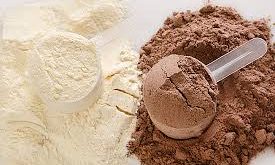At a time when humanity is swamped with Covid-19 pandemic, pulse oximeter has emerged as an effective monitoring tool. It is useful for Covid-19 patients as well as folks who may be at risk of getting the infection. Pulse oximeter is not meant to diagnose Covid infection, but it can help avoid panic and confusion. If the oxygen levels are normal, people can avoid visiting hospital.
So, how does a pulse oximeter work? Well, the idea is quite simple, even though it has advanced tech working in the background. Here are some things you need to know to understand how pulse oximeter works.
Primary mechanism of pulse oximeter
One of the best things about a pulse oximeter is that it is a non-invasive method to measure oxygen saturation level (SpO2) in the body. It also measures heartbeats per minute. A pulse oximeter is usually fixed on the fingertip. It works by sending two wavelengths of light, which are then detected by a photodetector. Changes in absorbance of the wavelengths are then utilized to measure oxygen saturation level.
Commonly available pulse oximeters have an error percentage of +- 2%. For example, if the oximeter shows oxygen saturation of 90%, the actual value can be in the range of 88% to 92%.
Pulse oximeter normal values
In most cases, your oxygen saturation level should be more than 90%. This is necessary for your cells and overall health. Some temporary reductions may be acceptable, but long-term deficiency in oxygen saturation can be damaging. In case of healthy individuals, oxygen saturation levels are usually more than 95%. If we talk about the current Covid pandemic, you can consult your doctor about the level of oxygen that would be considered safe for Covid-19 patients.
To utilize pulse oximeter in an effective manner, it is essential that oxygen levels are measured before, during and after physical activity. This will allow a better understanding of how oxygen levels are getting affected due to exercise. In a healthy individual, oxygen level is usually above 90% during and after exercise. If your SpO2 level is regularly falling below 90%, it would be better to consult a doctor.
It is to note that pulse oximeter devices have been in use long before Covid-19 entered the scene. Pulse oximeter is often used for other patients with diseases such as asthma, lung cancer, anemia, congenital heart defects, chronic obstructive pulmonary disease (COPD), pneumonia and heart attack or heart failure. It can be used for various purposes such as measuring the effectiveness of medication, evaluating usefulness of ventilator, monitoring oxygen levels during surgery, to detect sleep apnea, etc.
 Newspatrolling.com News cum Content Syndication Portal Online
Newspatrolling.com News cum Content Syndication Portal Online





